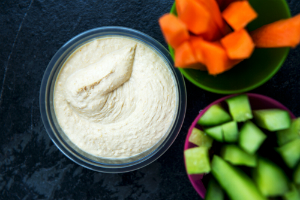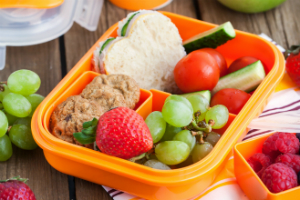How to pack a nutritious lunch box for your children
- Overview
- Full article
- Related articles
There are many factors at play when we think about pulling together a packed lunch for our children. We want it to be healthy, delicious, fuel our children’s brains through the afternoon, be easy to pull together and pass the ‘peer-pressure’ test. We also need to bear in mind if there are any restrictions or guidelines that the school has in place, such as 'no nut' or 'healthy eating' policies.
Packed lunch boxes should contain something from each of the following groups:
Carbohydrate
Ideally make this wholemeal or wholegrain. This will provide a slow release of energy to help your children to concentrate throughout the afternoon.
Protein
“Most lunch boxes don’t contain enough protein, but children need plenty of protein to help them grow.”
Protein is essential for building and maintaining muscles, organs, and the immune system. Good protein can be found in milk, cheese, lean meats and fish.
Calcium
Nutrients that are required for bone growth and development are crucial, so aim to add a portion of calcium to your child’s lunch box. Try out non-dairy sources of calcium such as canned salmon or sardines, hummus made with white beans, chopped orange pieces or sesame seeds.
Fruit
The problem with fruit is that it can bruise easily and quickly look unappetising. Try adding fruit that will still look delicious after being carried in a lunch box on the school run and after being thrown around in the playground. Satsumas, a small pot of berries or grapes, chopped pear or a plum are all good options. And you can try wrapping fruit in a piece of kitchen roll and securing with a band to protect it.

Vegetables
Cherry tomatoes, carrot sticks, pepper sticks, cucumber slices, radishes, celery sticks can all be easily added to a lunch box.
Drink
Water is the perfect drink for a lunch box. Diluted fruit juice, a carton of milk or a home-made smoothie can also be a great addition. But watch out for sugary drinks or branded cartons as well as little fruit juice cartons which can contain 4.6 teaspoons of sugar.
Branded lunch box fillers – be aware!
There are so many branded products for your child’s lunch box that are easily accessible in supermarkets and usually heavily branded with cartoon characters, rewards and prizes to make them as attractive as possible to children.
Unfortunately many of these are highly processed, containing limited nutrients, high levels of sugar and/or salt as well as artificial preservatives, colourings and sweeteners. These are best avoided. An online shop can prevent pester power.
Equipment tips
Most children’s lunch boxes are insulated but think about adding in a little freezer pouch to keep the food nice and fresh. Remember, lunch boxes are usually stacked in the classroom until lunchtime and are not kept in the fridge.

In the winter, some children love having a hot lunch. A little flask can be great for packing soups, stews and casseroles for a warming, comforting lunch.
Bento lunch boxes are also easy to come by and can provide a perfect way to box up an appetising and healthy lunch.
Metal water bottle – with concerns over BPA leaking into our foods and water from plastic bottles and boxes, you may want to opt for a metal water bottle or a BPA free plastic bottle that you can get from most retailers.
How to combat uneaten lunch
If your child's lunch is regularly coming home uneaten, talk to them to find out the reason for this and work with your child to find a suitable solution. Some reasons can include:
- Too big a snack in the morning, or snack is too close to lunch time
- They don't like where they are eating (in some schools children with packed lunches sit apart from those on school dinners)
- They go straight out to be with their friends
- They don’t like the food in their packed lunch
- Other children are commenting on the contents of their lunch box or the lunch box itself
- Child wants branded, packaged foods to fit in with their peers.
It can be useful to overcome the above by going round the super market together to find foods that you are both happy with. Be clear about the foods that work for both of you and your guidelines before you go shopping, such as nothing over 15g per 100g of sugar, or nothing with ingredients that you can’t pronounce!
Last updated Wednesday 20 September 2017
First published on Monday 14 September 2015
